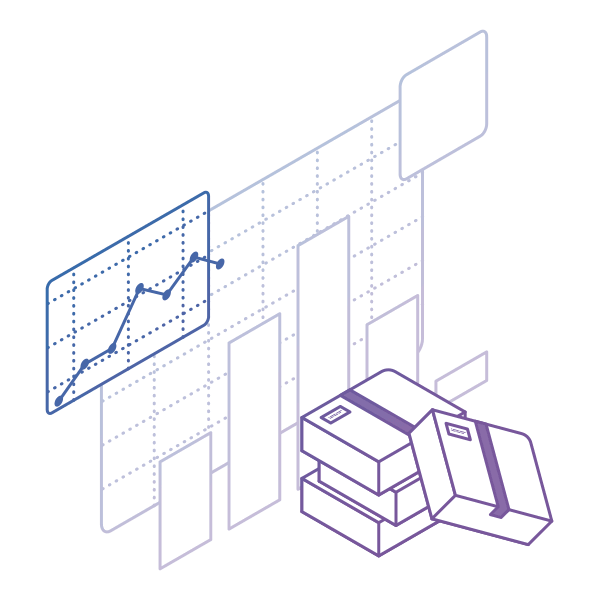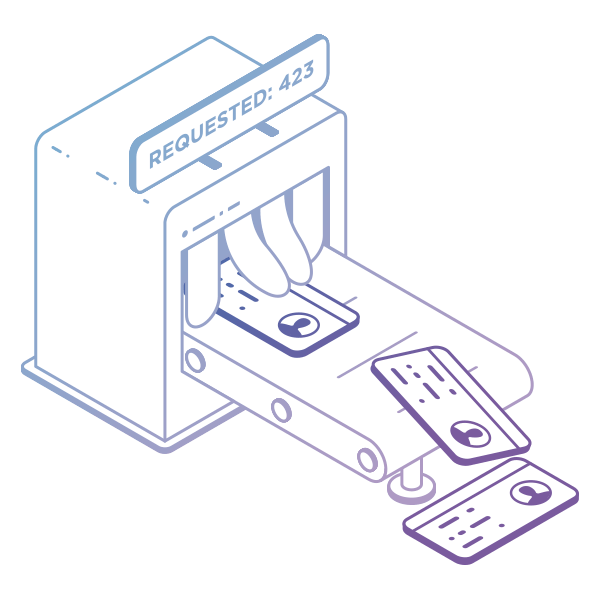A great deal of Lean management’s success lies in pulling new work in progress rather than pushing it. This allows you to create and deliver value only when there is a demand.
However, managing a pull system wouldn’t be possible without maintaining a continuous flow of work. This is not an easy task, as demand is in a constant state of flux. To meet demand and run your process in the most efficient way, you need to define the time for your work process.
In this article, we’ll discuss takt time, how to measure it, and offer some practical examples.
What Is Takt Time?
Takt time is a key concept in Lean manufacturing, which is a systematic approach to reducing waste and improving efficiency in production processes.
Takt time is the rate at which you need to complete a product or service to satisfy customer demand. By aligning production rate to customer demand, organizations can avoid overproduction, reduce inventory costs, and improve overall efficiency.
In other words, a takt time is your production rate and can easily be categorized as the heartbeat of your work process. It allows you to optimize your capacity to meet demand without overproducing or underproducing.
The term originates from the German word "takt", which means a beat or a pulse. Takt time was first used as a metric in the 1930s in Germany for airplane manufacturing. Twenty years later, it contributed significantly to Toyota's rise from a small Japanese carmaker to the largest automobile company in the world.
Takt Time Formula Explained
The takt time formula in Lean is:
Takt Time = Available Production Time / Average Customer Demand
- Available Production Time: the total amount of time available for production during a specific period.
- Customer Demand: the amount of products or services that customers require during the same period. This is usually expressed as a rate or quantity, such as units per day, hours per week, or calls per hour.
For example, if you receive a new product order every 4 hours, your team needs to finish a product in 4 hours or less to meet demand.
- Takt Time = 480 minutes / 2 orders
- Takt Time = 240 minutes per order
This means that the company must complete one order every 240 minutes (about 4 hours) to meet customer demand without overproducing or underproducing. If they can produce orders faster than 4 hours, it may indicate that they are overproducing and creating unnecessary inventory. If they cannot produce the order within 240 minutes, they may not be meeting customer demand and may need to adjust their production processes or increase resources.
How to Calculate Takt Time?
Takt time is calculated as the available production time divided by the customer demand.
 Takt time formula
Takt time formula
- Define production time and customer demand: To receive an accurate result using this takt time formula, you should put both the production time available and the customer demand into frames.
- Exclude planned downtime: We advise you to include only the time your team will be actively working on creating value for your customers, excluding breaks, scheduled maintenance, or shift changeovers.
- Use short time frames for customer demand: When calculating takt time, you should include a relatively short time frame for the average customer demand (e.g., a week or a month).
What Is a Takt Time Example?
Let’s calculate the takt time for an imaginary company developing 3D printing machinery. The workweek is five days long, and the company operates in a single nine-hour shift that includes a 60-minute lunch hour break and two 15-minute breaks in the morning and the afternoon. On average, the company receives orders for 10 machines per week.
To define the takt time that the team needs to maintain, we simply apply the above-mentioned formula.
The total available work time is 7 hours, 30 minutes per day. Breaking it down into minutes gives us exactly 450 minutes per day, which is 2250 minutes per week.
By dividing 2250 by 10 (average number of orders), we get a takt time of 225 minutes to complete a single 3D printing machine. Dividing 225 by 60 (minutes in an hour) gets us to a maximum takt time of 3 hours 45 minutes per order.
2250 / 10 = 225 minutes Takt time
As you can see, defining the takt time required to meet customer demand is not rocket science. With this data available, you can make well-informed choices for managing your team’s capacity according to customer demand.
Why Is Takt Time Important?
Defining takt time is crucial for optimizing your team’s capacity and reducing process waste. Takt time can help you maintain a continuous flow of work and reduce Mura (unevenness) in your workflow. Nonetheless, takt time is valuable for optimizing storage costs as it will help you avoid overproduction.
What Are the Benefits of Takt Time
There are several important benefits of using takt time in Lean:
Aligned Production to Customer Demand
By calculating takt time, teams can understand the rate at which they need to produce goods or services to meet customer demand. This ensures that production is aligned with actual customer needs, reducing the risk of overproduction or underproduction.
Reduced Waste
Takt time helps eliminate waste in production processes by ensuring that only the necessary amount of value is created to meet customer demand. This reduces the amount of excess inventory that can be costly to store, transport, and manage.
Improved Predictability
By aligning production to customer demand and reducing waste in each process, organizations establish a takt time leading to an improved predictability.
Improved Efficiency
Takt time can improve production efficiency by optimizing production rates to match customer demand. This can reduce waiting times, bottlenecks, and other inefficiencies in the process.
Continuous Improvement
Takt time provides a clear target for teams to work towards, making it easier to identify areas for continuous improvement. By progressively improving their value creation process, teams can reduce costs, increase efficiency, and improve customer satisfaction.
What Are the Limitations of Takt Time?
While takt time can be a useful tool for improving production efficiency and reducing waste, it does have some limitations. Here are some of the main limitations of takt time:
Assuming Stable Demand
Takt time is based on the assumption that customer demand is stable and predictable. However, this is not always the case and can hinder production efficiency.
Assuming Production Processes Are Consistent and Predictable
Takt time does not account for the variability of processes and demand and can lead to overproduction or underproduction.
Assuming External Factors Can Be Always Controlled
Machine breakdowns, shortages, and employees leave cannot always be anticipated or avoided.
Takt Time vs. Cycle Time vs. Lead Time
Takt time, lead time, and cycle time are essential Lean metrics; however, there is a tendency to confuse their meaning. While lead time and cycle time indicate how work progresses through your workflow, takt time focuses on the actual production rate of a team or a process.
-
Lead time is the time frame between an order being received and the client getting their value. The lead time focuses on the time it takes to fulfill customer orders.
-
Cycle time is the time your team spends actively working on a customer order.
-
Takt time is the maximum amount of time you need to comply with to meet customer demand.
As a Lean manager, you should consider all three metrics as key performance indicators of your workflow.
Takt Time Frequently Asked Questions (FAQ)
What Is the Takt Time Concept?
The takt time concept refers to the rate at which a product or service should be produced to meet customer demand. Takt time is used to set the pace of production and ensure that products and services are created at the right speed to comply with the customer needs.
How Is Takt Time Calculated?
Takt time is calculated by dividing the total available production time by the average customer demand.
What Is an Example of Takt Time?
If you receive a new order every 4 hours, it means that your team needs to finish an order in 4 hours or less to meet demand. In other words, your team’s take time should be within or less than 240 minutes (4 hours).
Businessmap is the most flexible software
to align work with company goals
In Summary
Takt time is one of the most important Lean metrics. By defining takt time for your workflow you can:
- Establish a continuous flow of work.
- Optimize your capacity to meet customer demand.
- Reduce storage costs by avoiding overproduction.





 Takt time formula
Takt time formula


